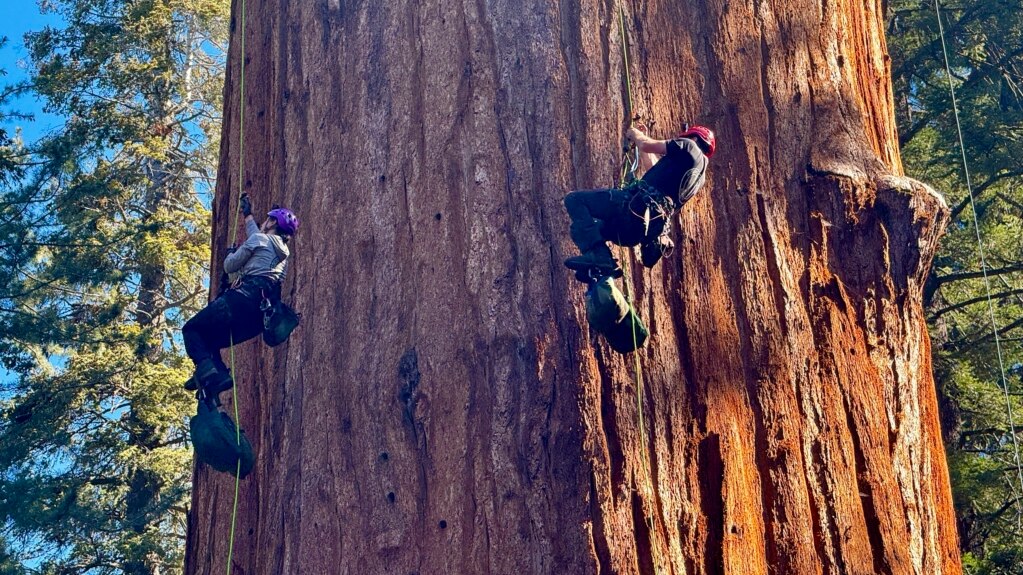In the American state of California, researchers recently climbed the world’s largest tree to check on its health. The tree is a giant sequoia named General Sherman.
The climbers had good news to report when they returned to the ground.
"The General Sherman tree is doing fine right now," said Anthony Ambrose. He is executive director of the Ancient Forest Society and led the team of researchers.
They were looking for damage to the 2,200-year-old tree --- and possible evidence of a growing threat to giant sequoias: bark beetles. The insects are native to California.
No one had ever climbed the famous 85-meter sequoia tree before the researchers. But, tourists from around the world come to Sequoia National Park to see the General Sherman and others of its kind.
Giant sequoias are the largest trees on Earth. They have survived for thousands of years in California's western Sierra Nevada mountains, the only place where the tree is native.
Hot and dry weather and wildfires have threatened the trees in recent years. In 2020 and 2021, record-setting wildfires killed as much as 20 percent of the world's 75,000 mature sequoias, park officials say.
Ben Blom is director of stewardship and restoration at Save the Redwoods League. "The most significant threat to giant sequoias is climate-driven wildfires," he said. "But we certainly don't want to be caught by surprise by a new threat, which is why we're studying these beetles now," he added.
Researchers are growing more worried about bark beetles. The insects were not a serious threat in the past. They lived alongside sequoias for thousands of years. However, park officials say recent bark beetle attacks have killed about 40 sequoia trees, mostly within the national parks.
Ambrose said researchers believe dry weather and fires make the trees weaker and less able to survive attacks.
The insects dig holes in the highest parts of the tree. Then they move down the trunk, destroying it as they go. The beetles are extremely small in size but large in number. Working together they can kill a tree within six months.
That is why park officials permitted Ambrose and his team to climb General Sherman. The experts looked for the extremely small holes that the bark beetle makes. They reported no sign of the insects.
But it is not possible to climb every sequoia tree and look at its highest part. So, scientists are considering other ways to check the trees, such as the use of drones and satellite imagery. The technology might be able to record and measure beetle activity over large areas of forest.
The health check of General Sherman was organized by the Giant Sequoia Lands Coalition, a group of government agencies, Native tribes and environmental groups. They hope to establish a health check program for the tall trees.
If they discover beetle infestations, officials say, they could try to fight the attacks with water or chemical treatments. They can also remove individual branches of affected trees.
Bark beetles have severely damaged some forests in the Western United States in recent years. But they did not threaten giant sequoias until recently.
Clay Jordan is superintendent for Sequoia and Kings Canyon National Parks. He said the sequoias “have really withstood insect attacks for a lot of years. So why now? Why are we seeing this change?" He added that researchers need to learn more to make sure they can protect the trees.
The sequoia General Sherman is named for William Tecumseh Sherman. The famous military leader helped lead Union forces to victory in the American Civil War.
I’m Andrew Smith.

